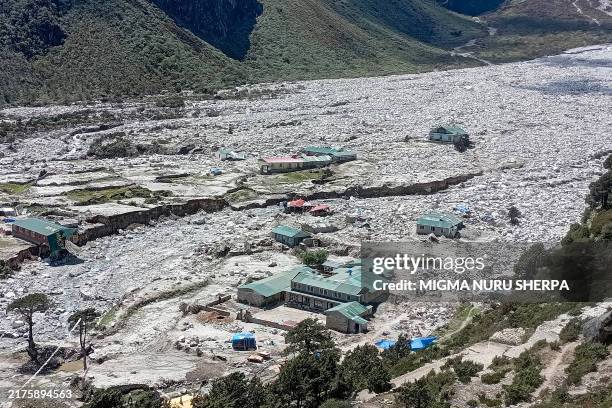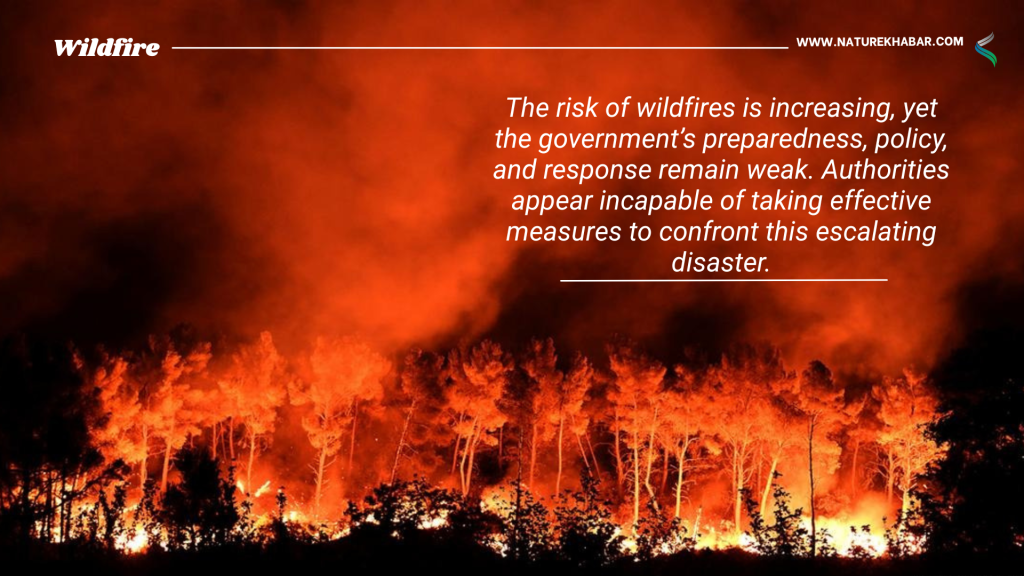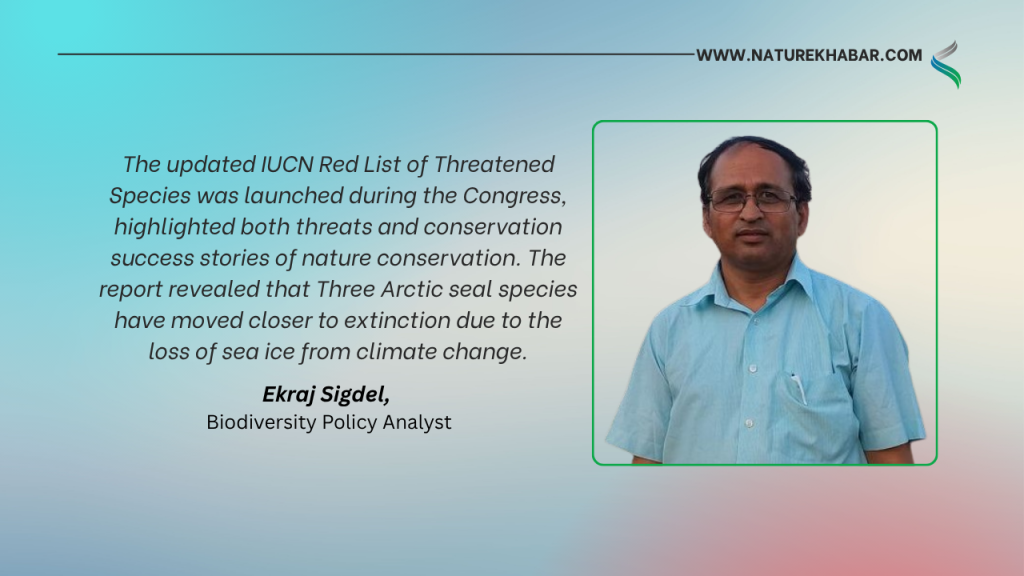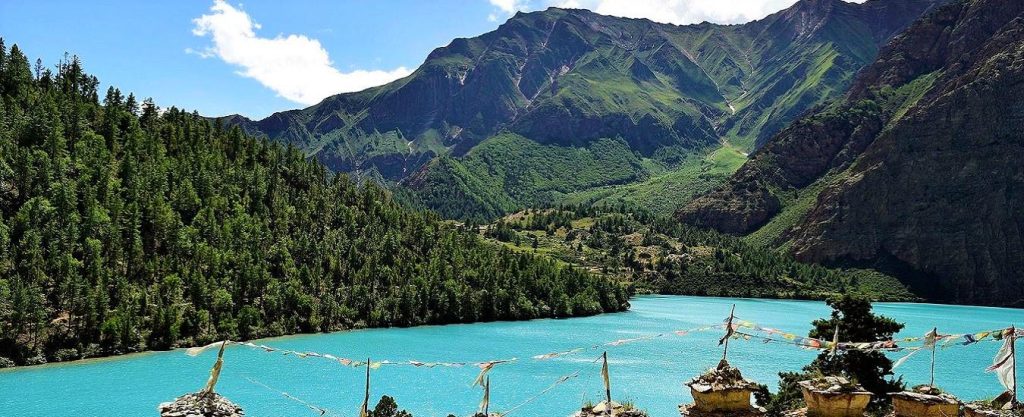Bridging the Digital Divide in Nepal’s Rural Communities to Combat Climate Change

Kathmandu- The majestic Himalayan peaks of Solukhumbu, the home of Mount Everest, are no strangers to the catastrophic effects of climate change. The region was recently devastated by a Glacial Lake Outburst Flood (GLOF), which occurred when a lake close to the Dudh Koshi River overflowed its banks due to glaciers melting more quickly as a result of rising temperatures.
In addition to destroying houses and the picturesque Himalayan settlement of Thame, the flood close to Kong Ri river also devastated crops and severed access to vital infrastructure, including as roads and bridges. This calamity served as yet another reminder of Thame's citizens' susceptibility to the effects of climate change, especially for those living in rural areas.
Despite the devastation, a crucial query arose: Would improved information availability have prevented, or at least lessened, this catastrophe? A local resident Dawa Sherpa said, "We had no idea this was coming. We could have relocated to safer territory and safeguarded our cattle if we had received the warning sooner. Lack of access to real-time climate data and early warning systems exposes many rural villages in Nepal, including Thame, to abrupt and potentially fatal catastrophes.
Even though this example is unfortunate, it highlights a larger problem that Nepal's rural communities are dealing with: the digital divide. These communities frequently lack the internet resources and technology needed to adapt and respond appropriately, even though they suffer the most from climate-related calamities.
Nepal's Rural Digital Divide
The most vulnerable to climate change are Nepal's hilly and isolated regions, including Solukhumbu, which is also the least linked to digital infrastructure. The Nepal Telecommunications Authority (NTA) reports that less than 35% of rural areas have internet penetration. Access to crucial information, such as early warning systems, weather forecasts, and tools for climate resilience that could save lives and livelihoods, is restricted by this digital divide.
Farmers in Taplejung another rural district, like Manju Karki, battle every day with the effects of erratic weather patterns. "It's impossible to predict when the rain or floods will arrive," she says. "We could adapt and save our crops if we had mobile tools or apps to warn us."
Digital technology access might mean the difference between Karki and many others being able to support their livelihoods or losing everything.
The devastating effects of climate change are already being felt by Nepal's rural populations, from increasingly likely floods and droughts to erratic monsoons. As if these difficulties weren't enough, they also had to overcome the digital gap, which is a significant obstacle. These communities are significantly disadvantaged when it comes to climate adaptation and mitigation since they have limited access to technology and internet resources.
Local business person Pasang Tsering Sherpa agreed, saying, "We would be safe and protect our property if we received early warming system at least few minutes earlier as well." They do not currently had any symptoms or signs of a GLOF.
The Rural Climate Emergency in Nepal.
As glaciers melt, landslides and glacial lake outburst floods (GLOFs) are becoming more frequent in alpine places, while droughts and flash floods are brought on by erratic rainfall patterns in the Terai and other lowland areas. The effects of climate change are already being felt by the rural communities in these areas, many of whom rely on subsistence farming, and they are moving downward in search of employment.
The Nepali government was established to deal with these problems and acknowledges the value of utilizing technology to increase climate resilience. However, especially in rural areas, the plan's implementation has been slow. Dr. Maheshowr Dhakal, the joint secretary of the Ministry of Forests and Environment, explains that although the Action Plan has implemented, there has been little incorporation of digital tools into these initiatives.
Digital Resources: A Lifesaver for Communities Affected by Climate Change
The potential for digital tools to assist rural populations in adjusting to climate change is enormous. Farmers can receive real-time meteorological updates, early warnings of floods or droughts, and crop management guidance from mobile apps and web platforms. The Department of Meteorology has been working to develop and familiarize the public with these information systems, but it has been challenging to gain experience because Nepal has inadequate telecom infrastructure and limited internet access.
These instruments have the power to change lives. Farmers can modify their planting dates or safeguard their livestock if they are aware of when significant rainstorms are likely. They can select crop varieties more appropriate for the changing climate if they have access to current knowledge on climate-resilient cultivars.
Chief of the National Disaster Risk Reduction and Management Authority, Dr. Anil Pokharel, also stated that digital technologies can literally save lives in areas where disasters hit without notice.She continued, saying, -The Nepali government is planning to reduce the use of digital devices in the upcoming years, at least in the early warning system field.
But despite their potential, expensive internet and a weak telecommunications infrastructure prevent digital tools from being widely used in rural Nepal. Many rural households are unable to obtain the information necessary to prepare for the effects of climate change due to these obstacles. "Despite our best efforts, we are unable to fully establish the network in Nepal's rural areas due to the lack of electricity, road access, and other infrastructure," stated Sangeeta Pahadi, Managing Director of Nepal Telecome. These topics are being discussed in relation to human rights and climate change.
The UN-sponsored Internet Governance Forum (IGF) strongly emphasizes digital inclusion as a fundamental human right. This focus is particularly relevant in the context of Nepal, where closing the digital divide is essential for both climate resilience and economic development.
Digital inclusion in Nepal's rural areas is more than just having access to the internet; it's a lifeline to knowledge that might help people prepare for climate change. According to Tribhuvan University climate specialist Madan Sigdel, "rural communities are fighting blind against climate change without digital access." They lack the knowledge necessary to get ready.
Accelerating the deployment of digital infrastructure in rural areas could be facilitated by targeted government interventions and public-private partnerships. Although development has been sluggish, programs like the Rural Telecommunication Development Fund (RTDF) seek to bring broadband and mobile service to rural areas of the nation. On the NTA account, the significant amount that the telecom service providers put in the RTDF is still frozen.
Finally, a multifaceted strategy is required to effectively close the digital divide in Nepal. To guarantee that every rural community has access to the digital resources and knowledge required for climate change adaptation, the public, commercial, and civil society sectors must collaborate.
There are a few key issues that the government and the intergovernmental committees tasked with addressing them must address in the context of Nepal.
For instance, it is essential to invest in infrastructure to provide rural areas with high-speed internet. Public-private partnerships, government subsidies, and neighborhood-based projects can all help achieve this.The price of internet costs is one of the other most crucial factors. Digital connectivity will be more accessible if rural households' internet prices are reduced. Lower pricing may be achieved by government initiatives or through competitive market mechanisms.These suggestions, made by a different government-formed commission, have not yet been put into practice.
An additional problem facing Nepal is digital literacy. Despite the availability of digital tools, many people living in rural areas do not know how to use them. Encouraging Public-Private Partnership: Together, the public and commercial sectors can guarantee the quick implementation of digital solutions that offer real-time flood alerts, climate data, and agricultural guidance.
The Way Forward
The digital divide is a significant obstacle to Nepal's rural inhabitants' ability to survive in the face of climate change, not only a gap in technology. Urgent action from the public and corporate sectors as well as foreign partners is needed to close this gap. Nepal has to make digital inclusion a top priority in its climate resilience plan while discussion into the international form.
Stakes are quite high for farmers like Manju and Karki Dawa Serpa. They asserts, "We need information, not charity." "We can take care of ourselves if we have the right tools."
Giving Nepal's rural populations the digital tools they need to adapt to a changing climate is essential to the country's future. By making investments in digital literacy, cutting expenses, and improving infrastructure, the nation can reduce the digital gap and provide its most vulnerable citizens with the tools they need to safeguard their future and way of life.

 Pitambar Sigdel
Pitambar Sigdel




Feedback